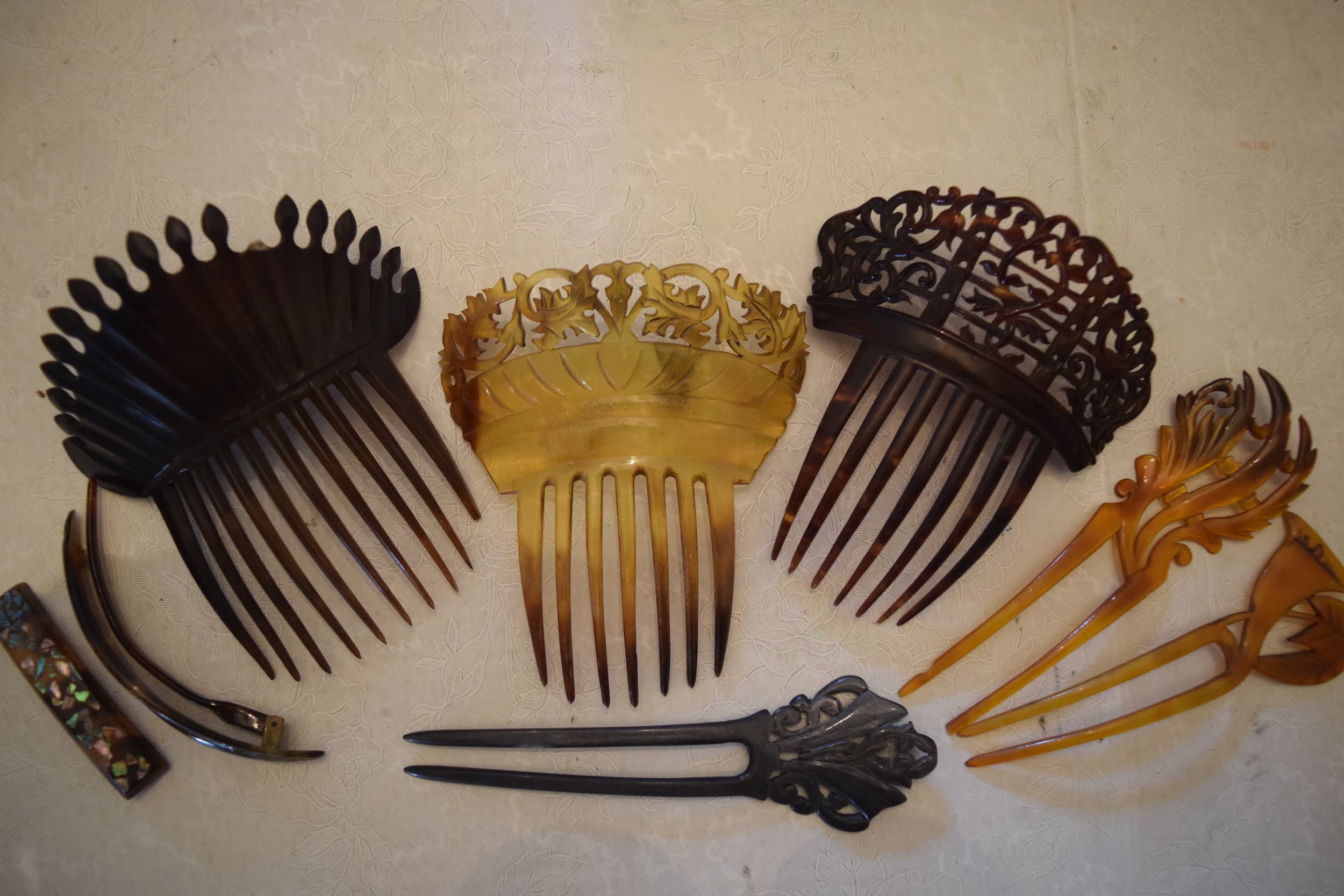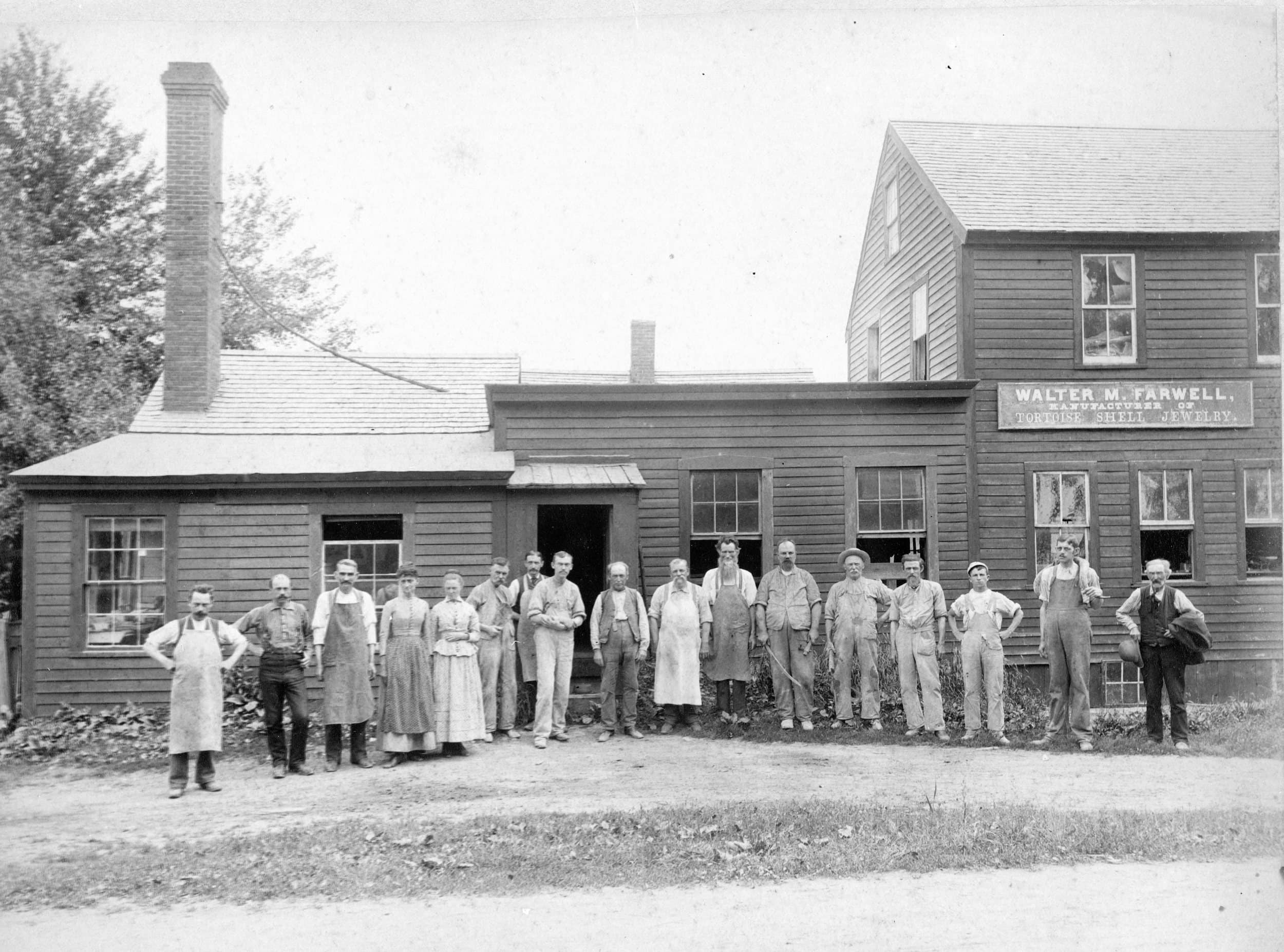
NORTHBOROUGH – What do tortoiseshell, horn, and celluloid have in common? They were all used to manufacture combs, jewelry, and buttons, some of the primary industries in Northborough from the mid-1800s to early 1900s. In fact, in 1850, out of fifteen industrial establishments in Northborough, six of them were comb factories.
There were over 15 comb makers in Northborough, the earliest manufacturers being Wilder Bush and Silas Haynes, who in 1839 bought 25 acres surrounding Whitney Street and housed their factory on Howard Brook, which runs into Cold Harbor Brook. They made ornamental combs and sold raw materials, including bone, to other manufacturers.
Other prominent comb manufacturers were Whitaker and Proctor, whose factory was located at 5 Blake Street, where Sawyer’s Bowladrome is currently, and Farwell comb factory on Hudson Street. Whitaker and Proctor manufactured several different types of goods, including side and back combs, hair and braid pins, buckles, and buttons, and was run by Josiah Proctor and Nathaniel Currier Whitaker. Their partnership lasted from April 1880 to August 1888, after which Proctor continued the business until he died in 1892.
Proctor’s wife, Lizzie, and daughter, Emma, then took over the business.
Proctor employees, numbering around 30, worked 10 hours per day six days per week. The factories used resources from Northborough, such as dry goods, shipping, and lamp and oil firms, to support their business. Whitaker and Proctor’s traveling salesmen sold goods in New York, Pennsylvania, and as far away as St. Louis, Chicago, and Cincinnati.

Thanks to Bessie Marjorie Haskell for her 1905 essay about the Farwell comb factory for a high school course, we have a detailed view of the manufacturing process based on her accounts from a school trip. The shop and factory, the largest in town, was located at the corner of 56 Hudson Street and River Street and produced over 90 styles of combs, shawl and braid pins, bracelets, cuff buttons, vest chains, and necklaces.
Haskell described the factory as very loud with a pervasive odor of celluloid (synthetic plastic). To start, sheets of material such as horn and celluloid were cut to size and then were put into a machine that cut the teeth. All machines were run by water power. Male workers used small emery wheels to smooth and shape the teeth. Afterwards, the tops of the combs were fixed, curves were cut, and then women bent the combs into their shape.
Subsequently, the combs were polished with designs using printers’ ink and engraved.
Once the combs were polished for a final time and dipped into acetic acid to provide a glossy finish, they were set to dry and then packaged in boxes, wrapped in tissue paper, and tied with ribbon, ready to be sold.
After more than a successful half-century in Northborough, the button and comb industry came to an end as cheaper raw materials and foreign competition became factors. The Proctor factory closed in 1903, and the Farwell factory was the last tortoiseshell jewelry manufacturer in Northborough, closing in 1911.

















